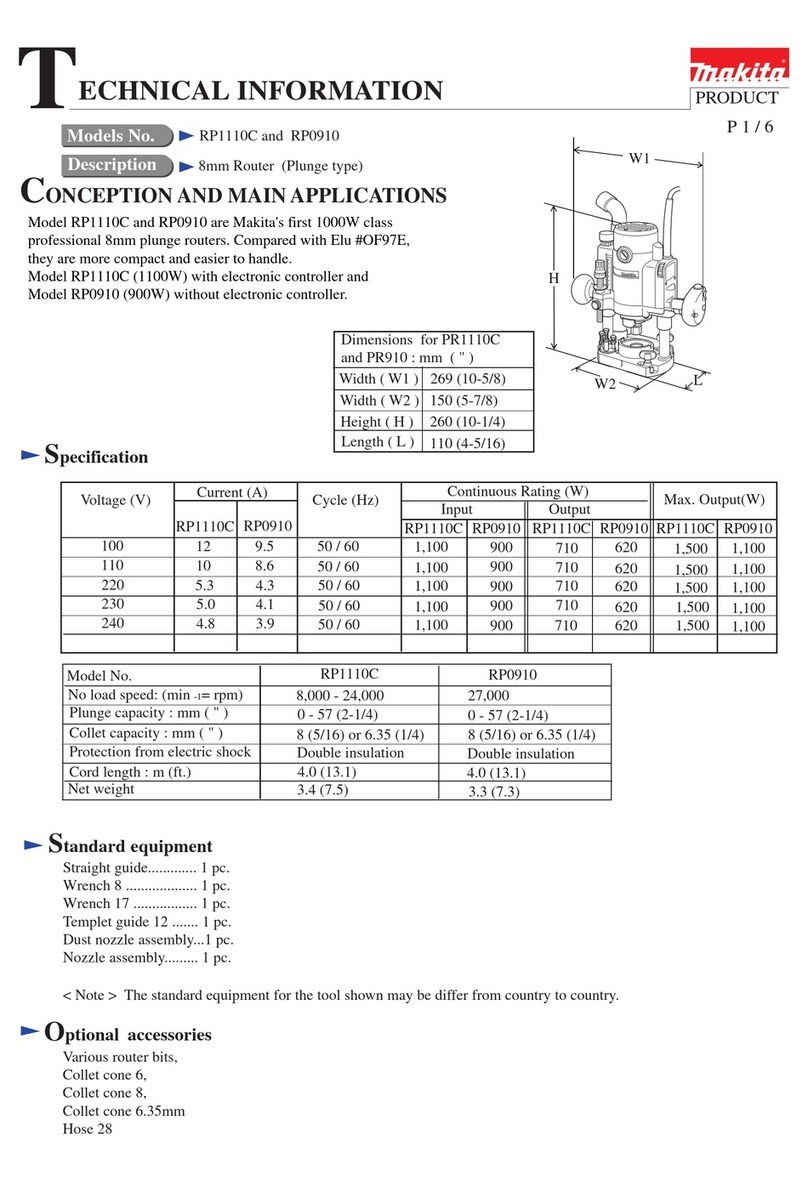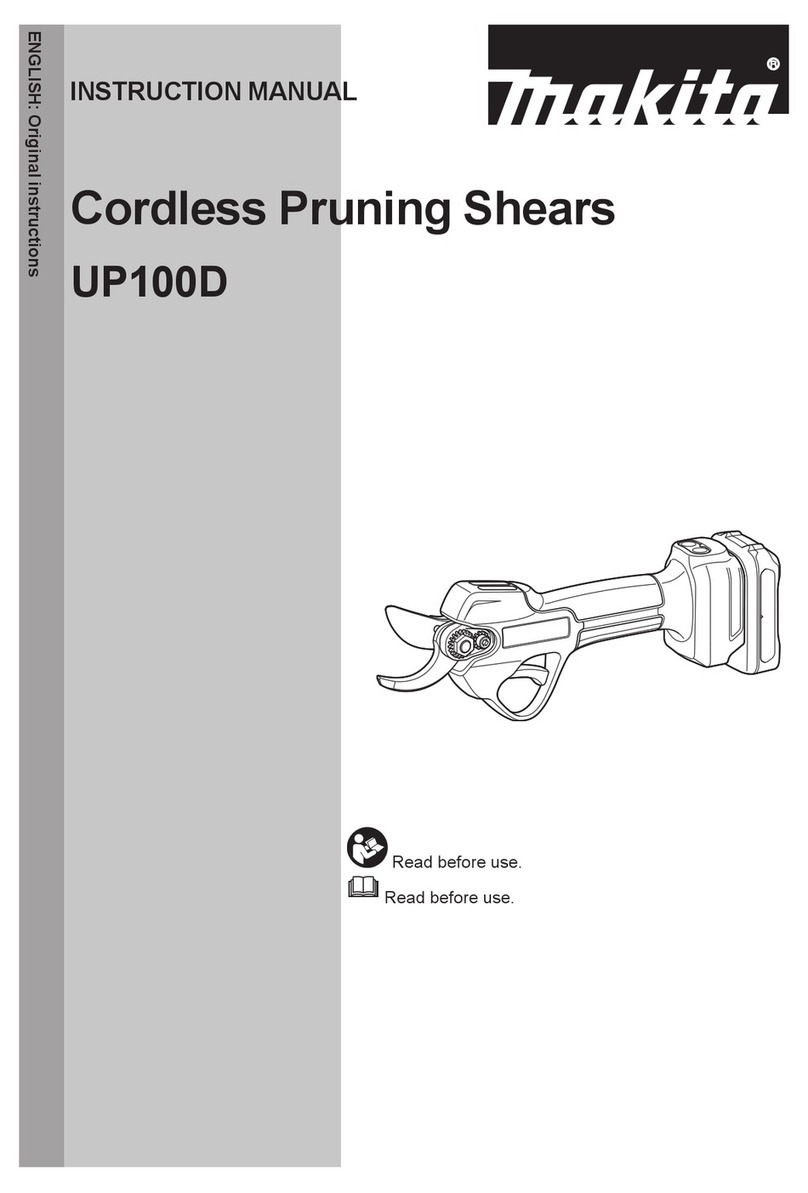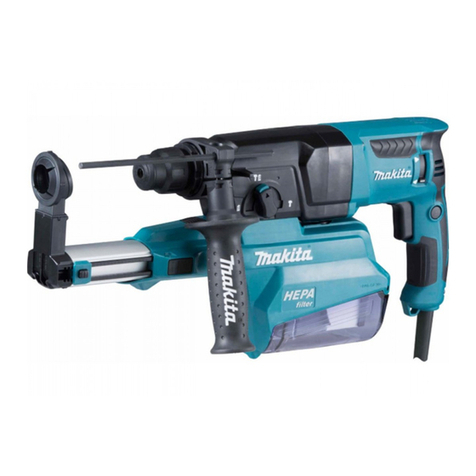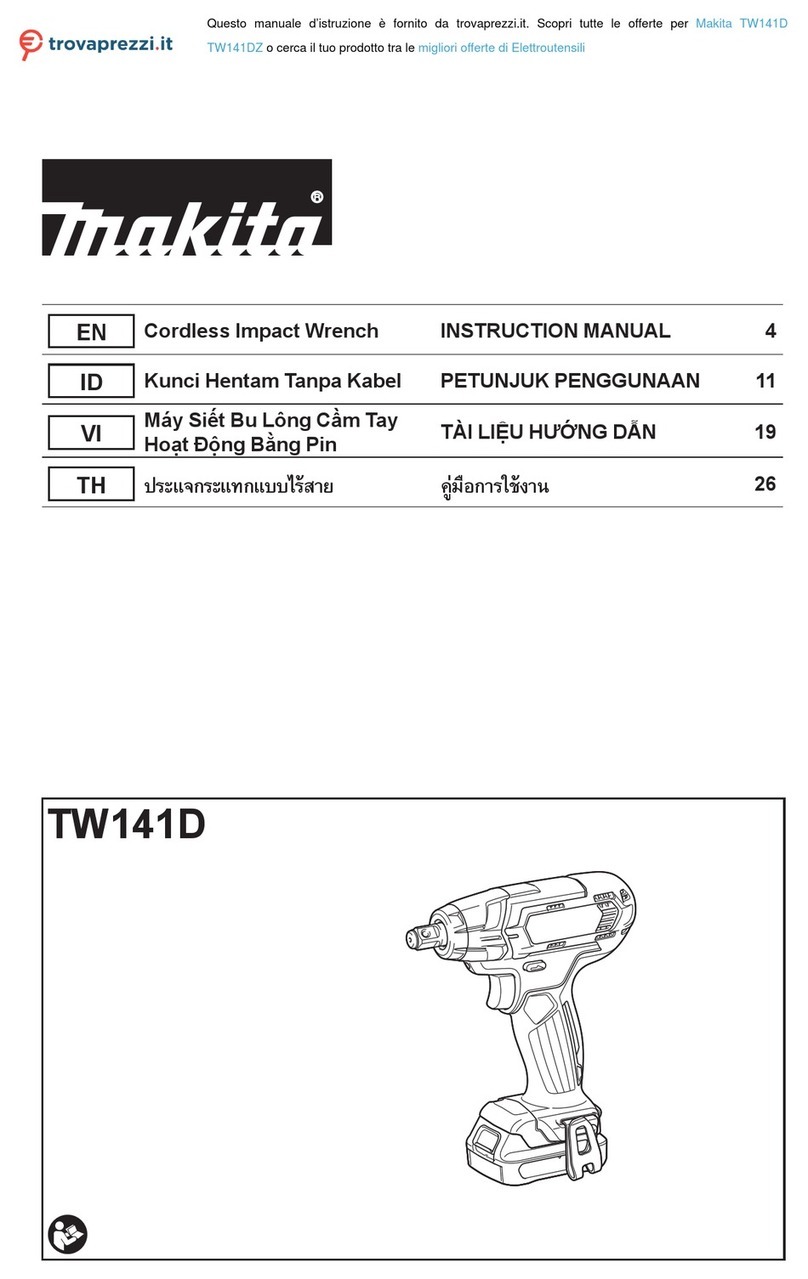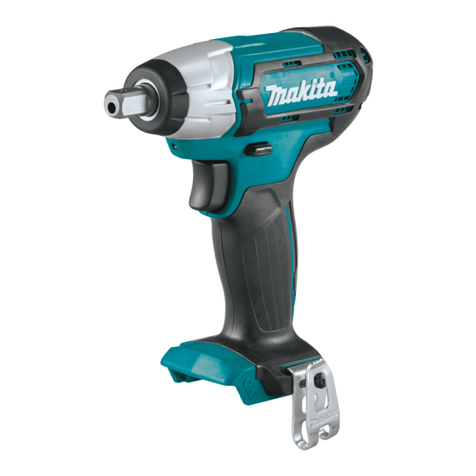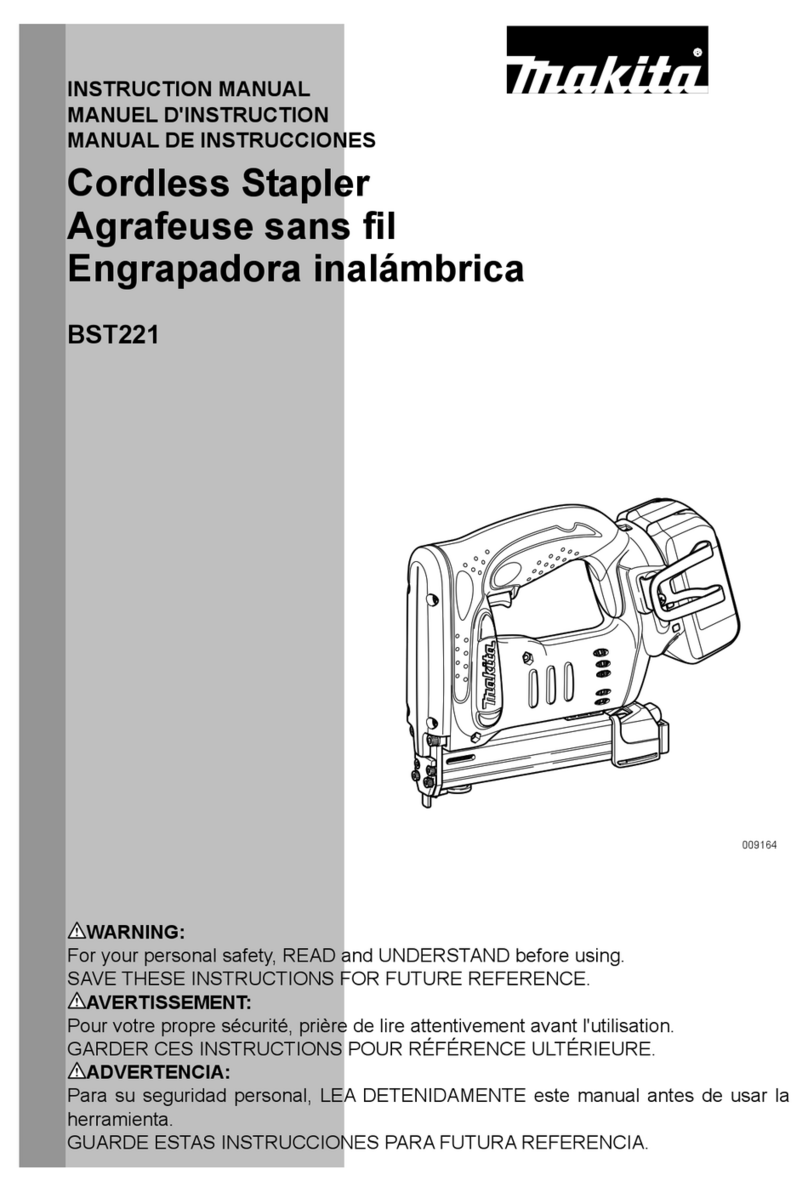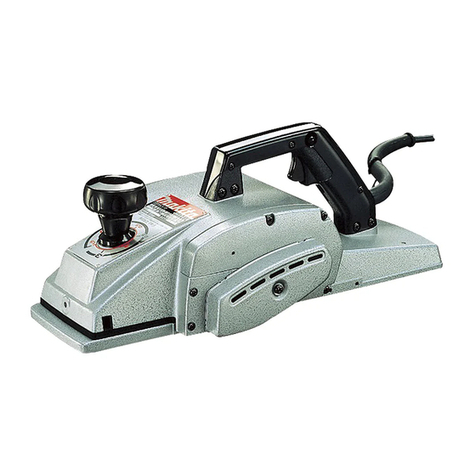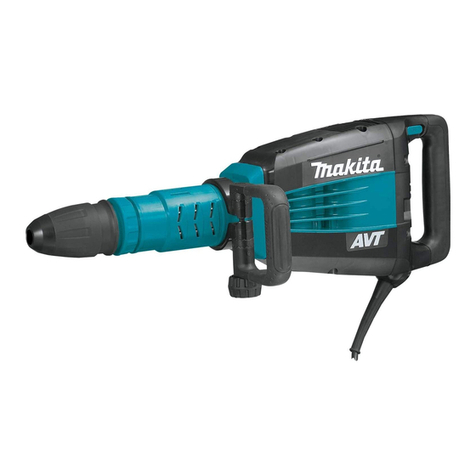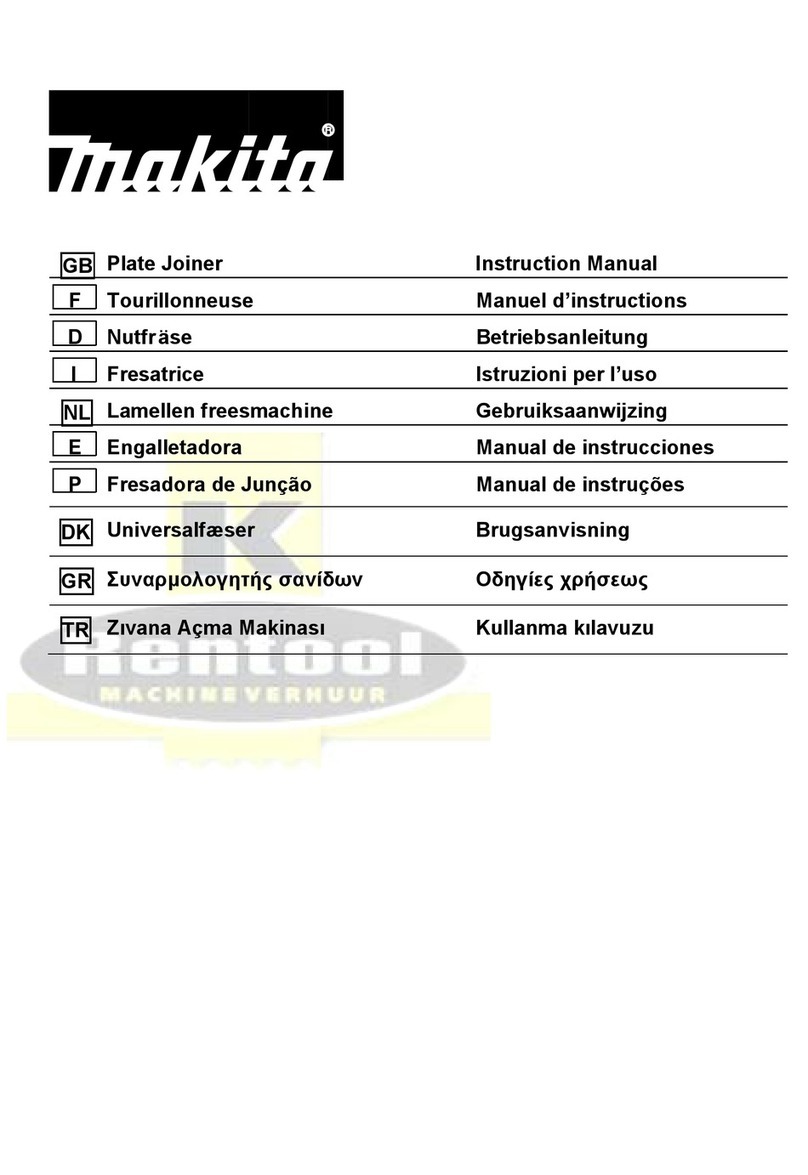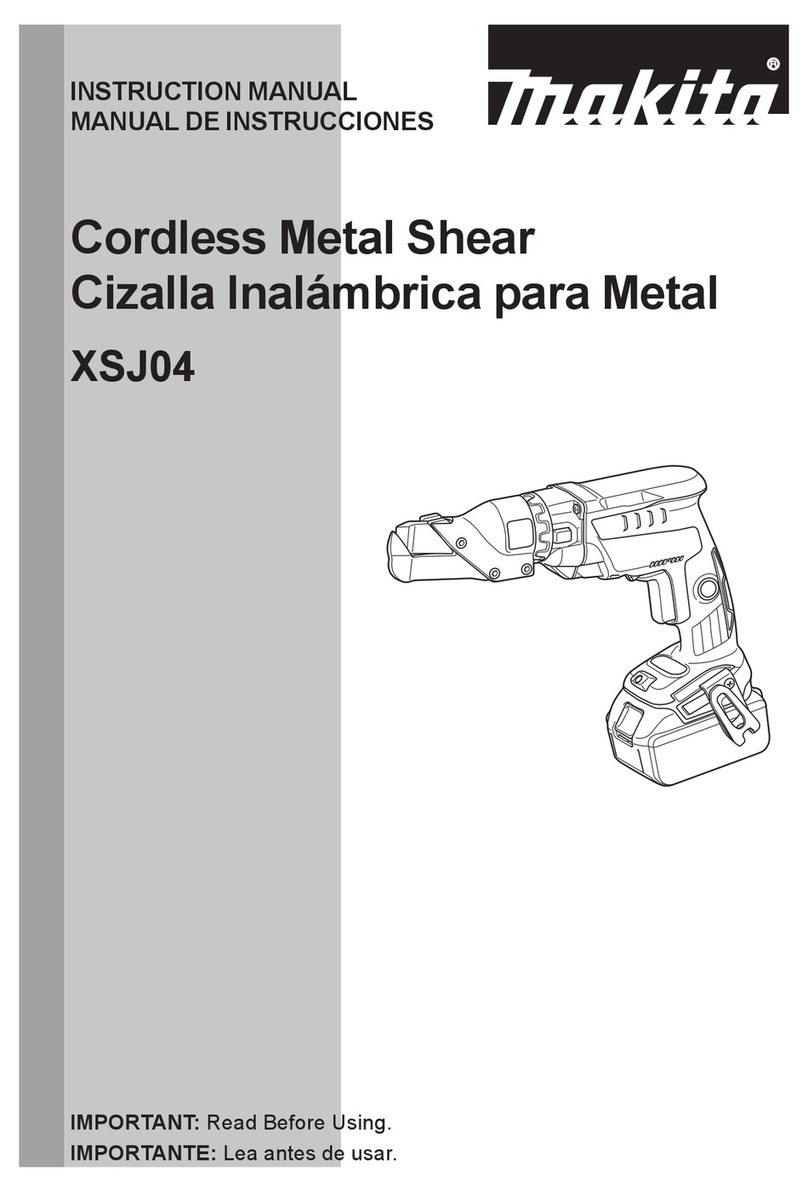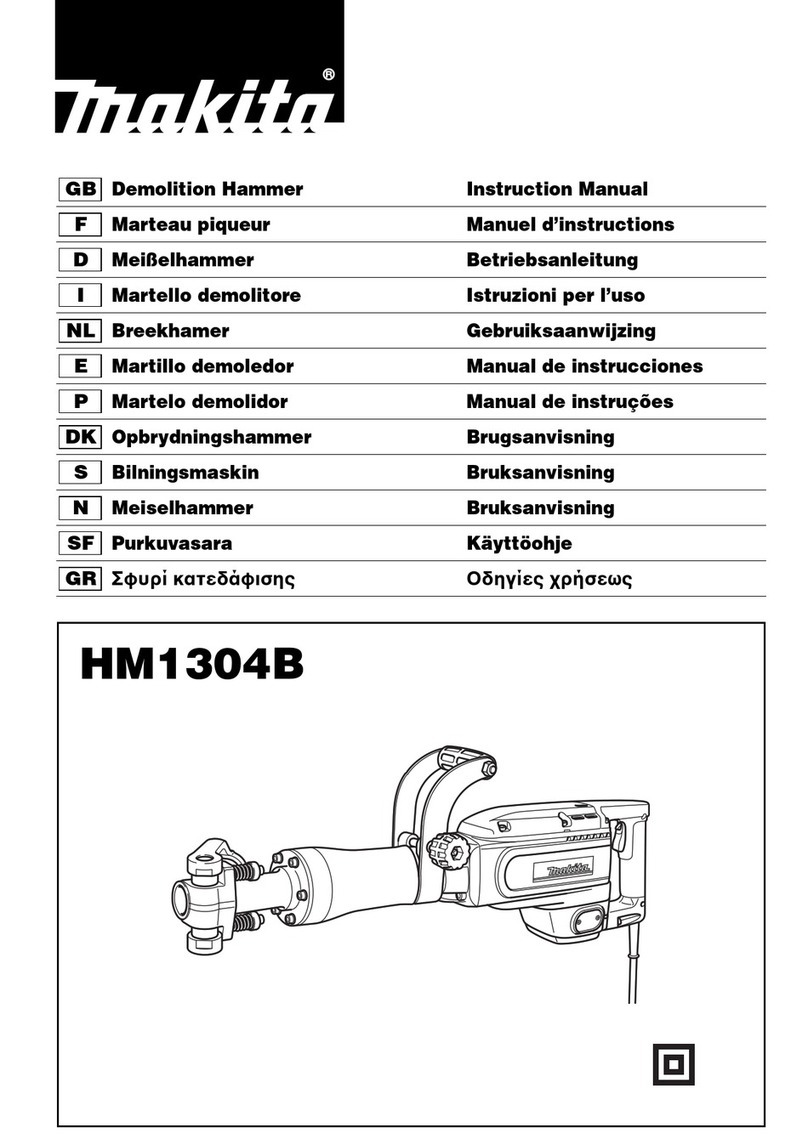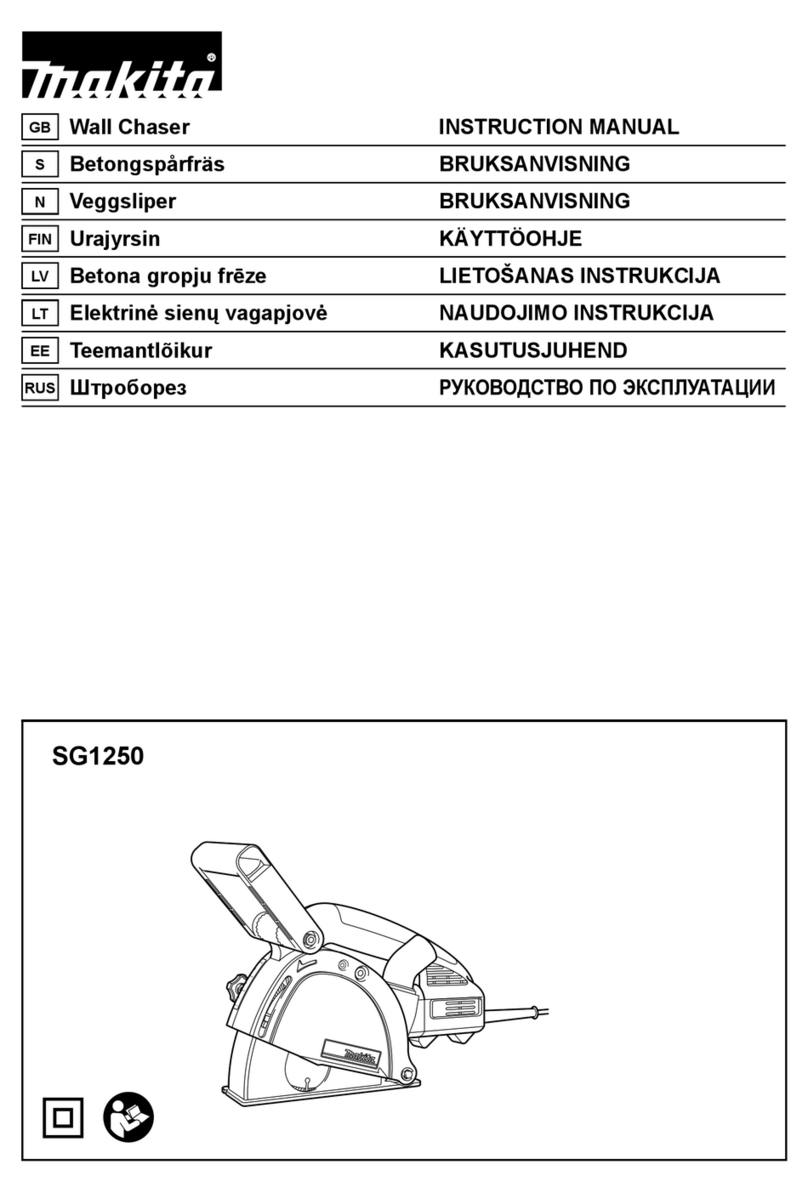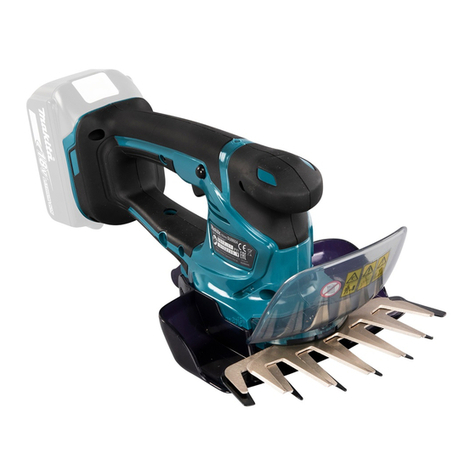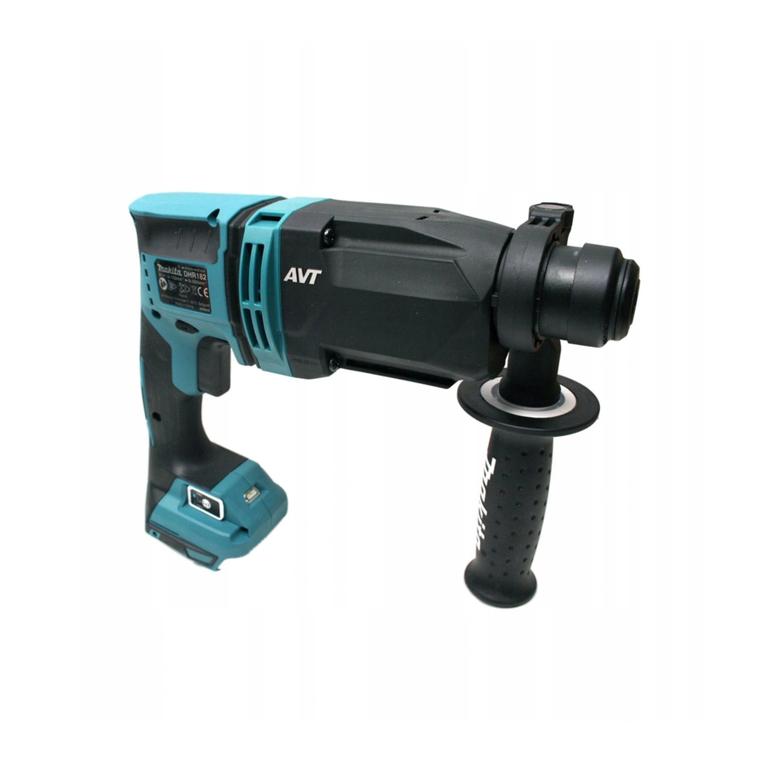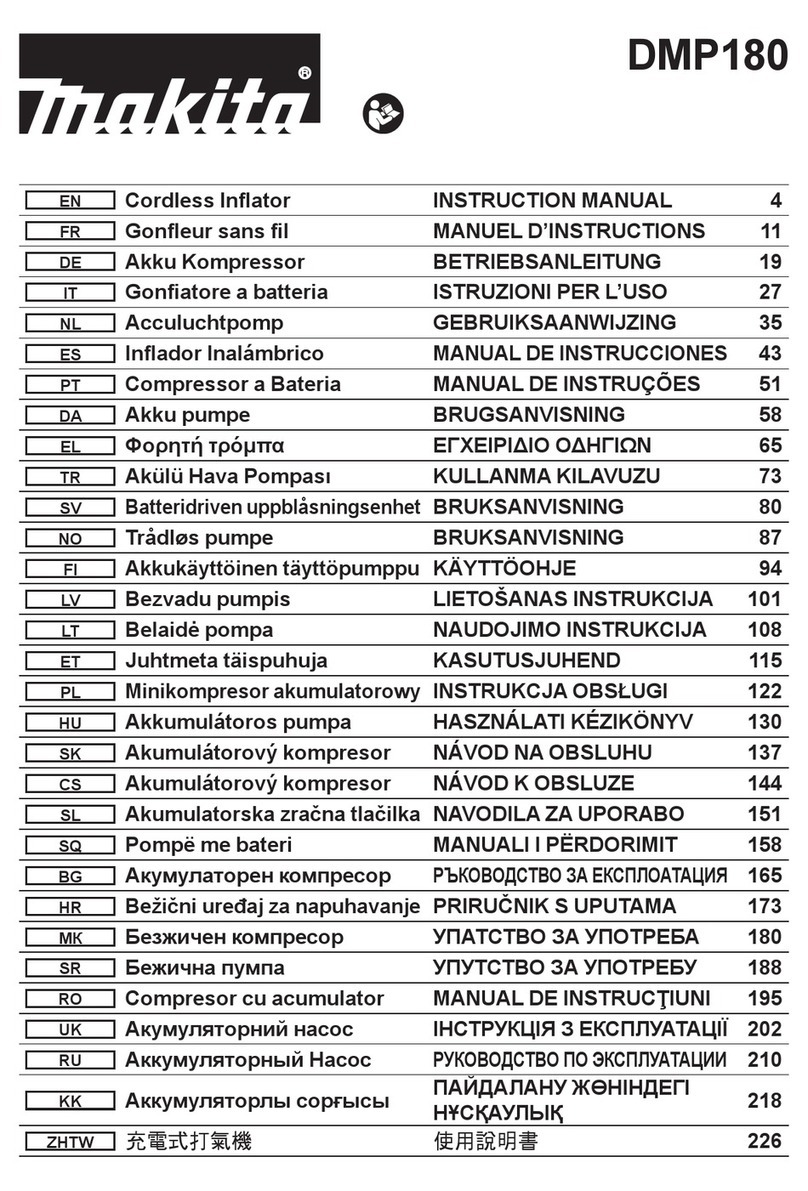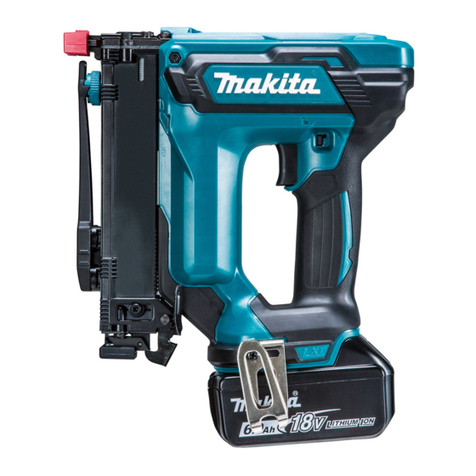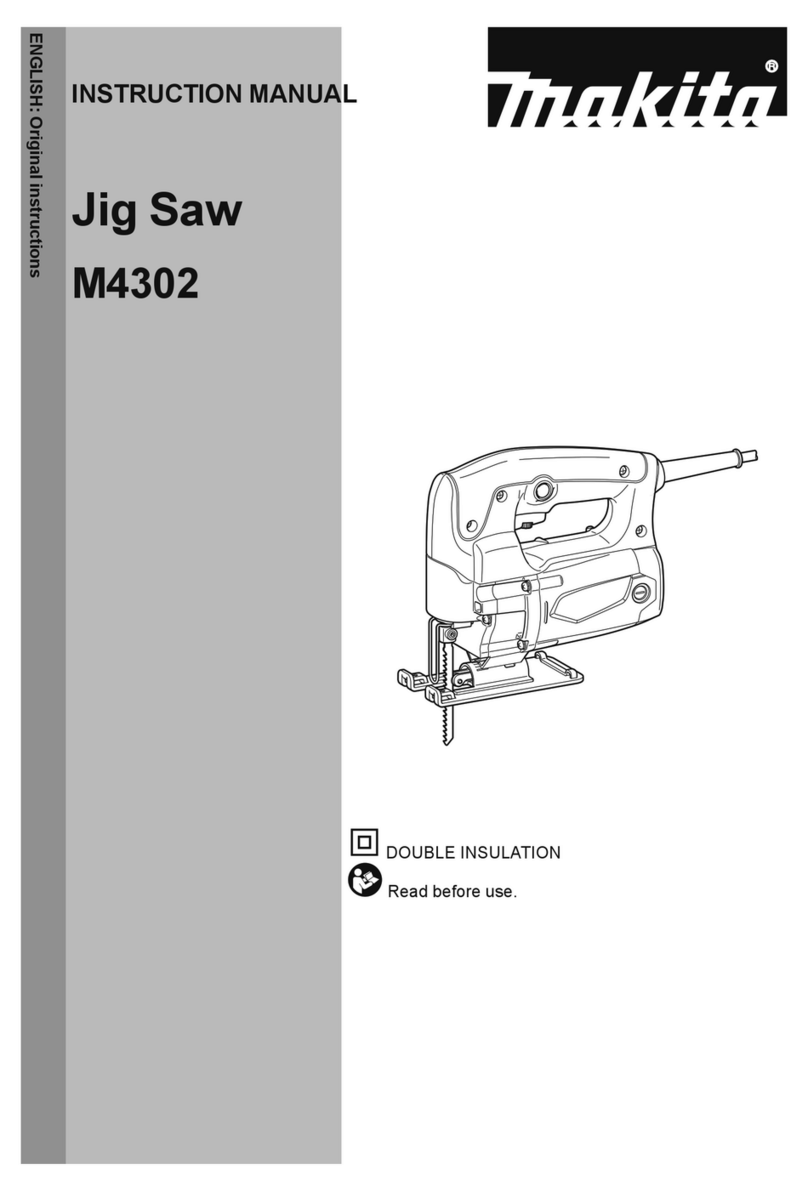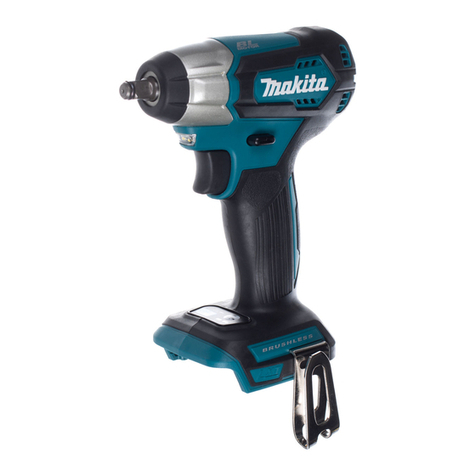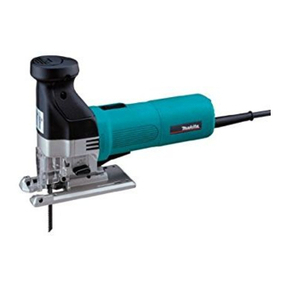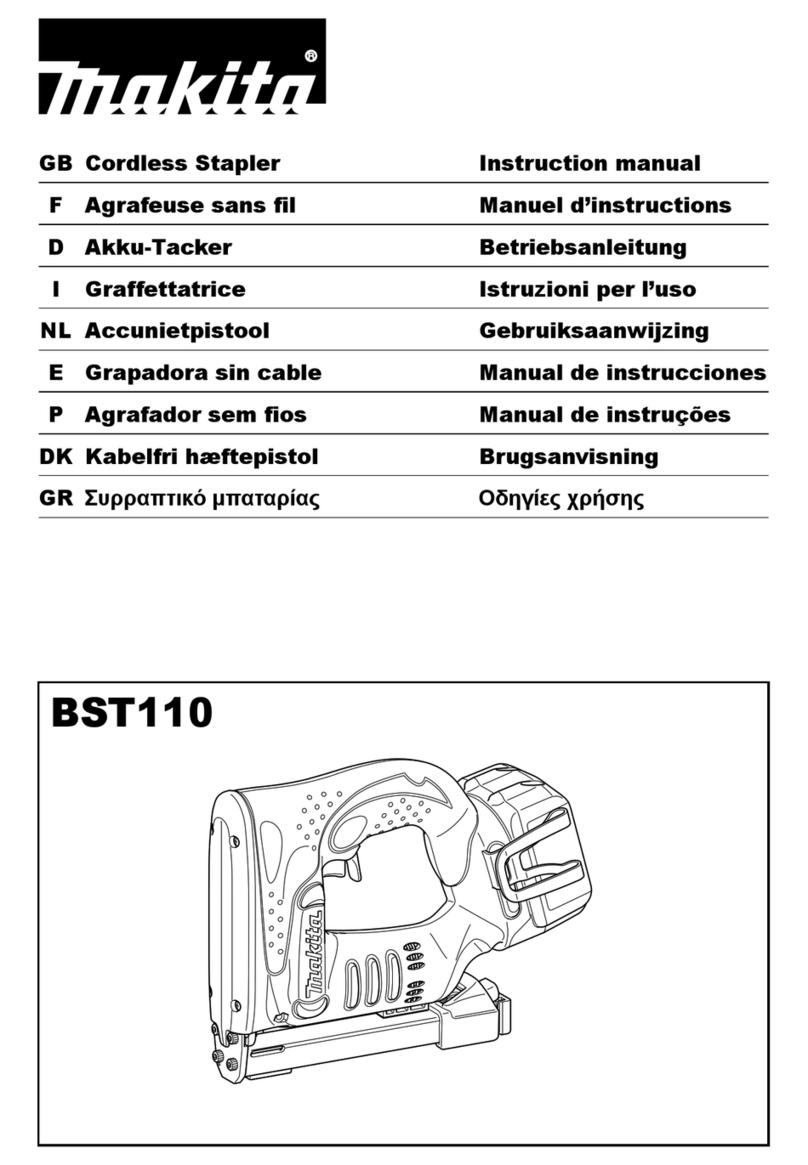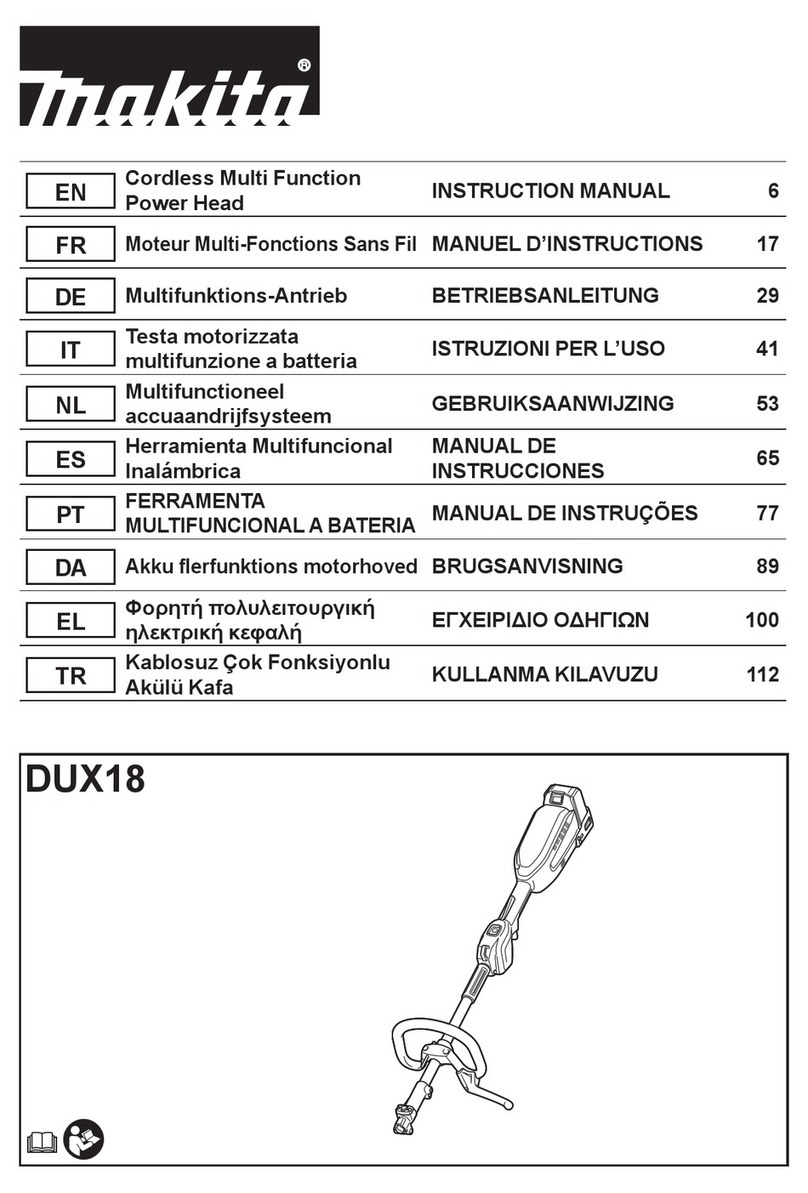4
15. Do not overreach. Keep proper footing and
balance at all times. This enables better control
of the power tool in unexpected situations.
16. Dress properly. Do not wear loose clothing or
jewellery. Keep your hair, clothing, and gloves
away from moving parts. Loose clothes,
jewellery or long hair can be caught in moving
parts.
17. If devices are provided for the connection of
dust extraction and collection facilities,
ensure these are connected and properly used.
Use of dust collection can reduce dust-related
hazards.
Power tool use and care
18. Do not force the power tool. Use the correct
power tool for your application. The correct
power tool will do the job better and safer at the
rate for which it was designed.
19. Do not use the power tool if the switch does
not turn it on and off. Any power tool that cannot
be controlled with the switch is dangerous and
must be repaired.
20. Disconnect the plug from the power source
and/or the battery pack from the power tool
before making any adjustments, changing
accessories, or storing power tools. Such
preventive safety measures reduce the risk of
starting the power tool accidentally.
21. Store idle power tools out of the reach of
children and do not allow persons unfamiliar
with the power tool or these instructions to
operate the power tool. Power tools are
dangerous in the hands of untrained users.
22. Maintain power tools. Check for misalignment
or binding of moving parts, breakage of parts
and any other condition that may affect the
power tool’s operation. If damaged, have the
power tool repaired before use. Many accidents
are caused by poorly maintained power tools.
23. Keep cutting tools sharp and clean. Properly
maintained cutting tools with sharp cutting edges
are less likely to bind and are easier to control.
24. Use the power tool, accessories and tool bits
etc. in accordance with these instructions,
taking into account the working conditions
and the work to be performed. Use of the power
tool for operations different from those intended
could result in a hazardous situation.
Service
25. Have your power tool serviced by a qualified
repair person using only identical replacement
parts. This will ensure that the safety of the power
tool is maintained.
26. Follow instruction for lubricating and
changing accessories.
27. Keep handles dry, clean and free from oil and
grease.
GEB020-2
PLATE JOINER SAFETY
WARNINGS
1. Blades must be rated for at least the speed
recommended on the tool. Blades running over
rated speed can fly apart and cause injury.
2. Always use the guard. The guard protects the
operator from broken blade fragments and
unintentional contact with the blade.
3. Hold power tools by insulated gripping
surfaces when performing an operation where
the cutting tool may contact hidden wiring or
its own cord. Contact with a "live" wire will make
exposed metal parts of the tool "live" and could
give the operator an electric shock.
4. Use only the blades specified for this tool.
5. Never operate the tool with the blade locked in
exposed position or without the blade cover
secured properly in place.
6. Make sure that the blade slides smoothly
before operation.
7. Check the blades carefully for cracks or
damage before operation. Replace cracked or
damaged blades immediately.
8. Make sure that the flange fits in the arbor hole
when installing the blade.
9. Inspect for and remove all nails or foreign
matter from the workpieces before operation.
10. Always place the workpieces on a stable
workbench.
11. Secure the workpieces firmly with clamp or
vise.
12. NEVER wear gloves during operation.
13. Hold the tool firmly with both hands.
14. Keep your hands and body away from the
cutting area.
15. Run the tool for a while without the blade
pointing toward anybody. Watch for vibration
or wobbling that could indicate poor
installation or a poorly balanced blade.
16. Never reach your hands underneath the
workpieces while the blade is rotating.
17. Do not leave the tool running unattended.
18. Always be sure that the tool is switched off
and unplugged before making any
adjustments or replacing the blade.
19. Some material contains chemicals which may
be toxic. Take caution to prevent dust
inhalation and skin contact. Follow material
supplier safety data.
20. Do not use blunt or damaged blades.
